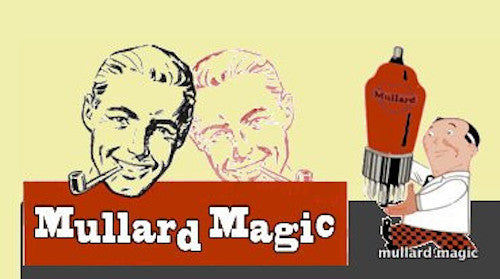
WHAT'S INSIDE A VALVE (xiv)
Share
Many valve types don't use pinch type construction but instead rely on a PRESSED-GLASS BASE or button in which the lead in wires are moulded into the glass base of the valve which then serve as both valve pin and electrode cage support. The EF50 was the valve type that pioneered the use of the pressed glass base for Mullard at the start of WW2 so that the technique was perfected for the time when B7G and B9A valves became the staple of valve manufacture during the early 1950s.
Typically, a PRESSED GLASS BASE was made using a multi stage rotary carousel base making machine like the one shown below: -


Rather than try to explain each stage in writing, here we have an X Ray representation of each of the main forming stages for you: : -
1: precut pins in holder


2: glass collar surround


3: heat








Things are slightly different for a pinch stem base as seen on the majority of octal valves and below we show a photo of a base pinching machine: -


The sequence of operations is quite complex and is done in two forming stations, the first to get the pinch glass shape and the second to embed the lead wires into the pinch. Here's the sequence for the 'initial shape' formation:-


And following, the sequence for the second 'embed 'formation: -


To give a finished base pinch with embedded wires and an evacuation stem ready for electrode cage mounting and envelope encapsulation:-


